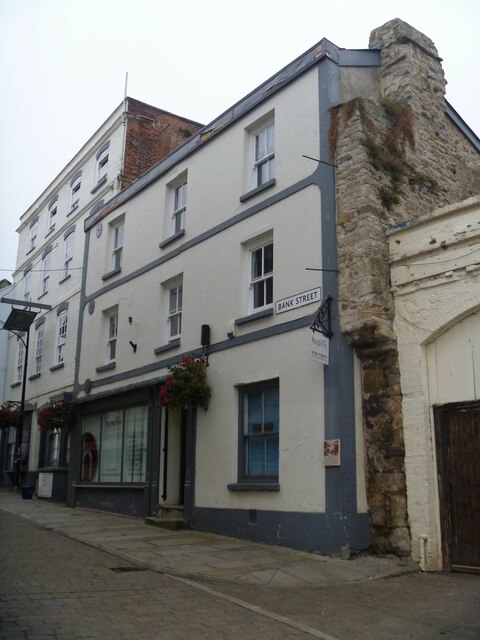Chepstow buildings [53]
Introduction
The photograph on this page of Chepstow buildings [53] by Michael Dibb as part of the Geograph project.
The Geograph project started in 2005 with the aim of publishing, organising and preserving representative images for every square kilometre of Great Britain, Ireland and the Isle of Man.
There are currently over 7.5m images from over 14,400 individuals and you can help contribute to the project by visiting https://www.geograph.org.uk

Image: © Michael Dibb Taken: 3 Sep 2022
Number 13 Bank Street has an early 19th century frontage to, or adjoining, an earlier building, shown by the corbelled corner, with a 19th century shopfront. Formerly an inn, the Lamb and Flag from 1766 to 1817, later The Wheatsheaf Inn. Constructed of stuccoed rubble stone under a slate roof. The side downhill has an elevation of rubble stone corbelled out at first floor level. Listed, grade II, with details at: https://cadwpublic-api.azurewebsites.net/reports/listedbuilding/FullReport?lang=&id=2493 Chepstow, the most easterly town in Wales, is located on the tidal River Wye, some 3 miles above its confluence with the River Severn. There is evidence of continuous human occupation from the Mesolithic period. The town grew in importance when the Normans erected a castle at what was the lowest bridging point of the River Wye. The town flourished as a port, being exempt from English taxation, and it mainly traded in timber and bark from the Wye Valley. The town became an important centre for tourism from the late eighteenth century.

